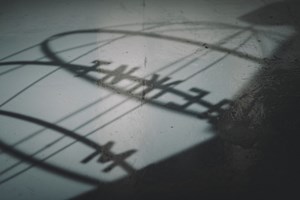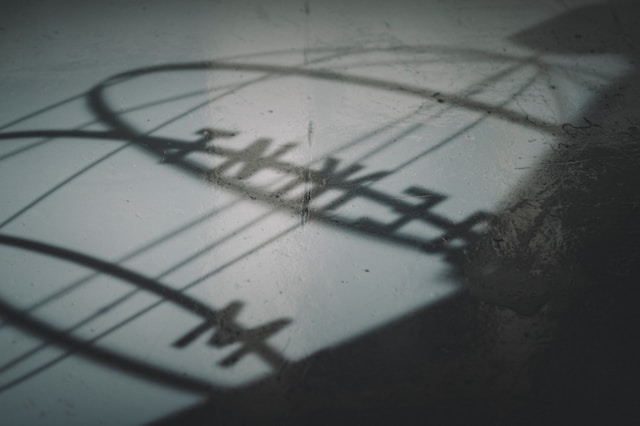
The realm of art is vast and multi-dimensional, serving as both an expressive outlet and a reflection of society's evolving culture.
The realm of art is vast and multi-dimensional, serving as both an expressive outlet and a reflection of society's evolving culture. For budding artists, especially those in college, finding a unique voice and source of inspiration can be a transformative experience. Art projects in college aren't just assignments; they're opportunities to delve deep into one's psyche, explore various mediums, and communicate profound messages.
Yet, as any artist will attest, inspiration isn't always easy to come by. The blank canvas or untouched clay can sometimes seem daunting, waiting for the spark of creativity to strike. While artists have traditionally sought inspiration from the world around them, modern artists, especially students, also face the challenge of distinguishing genuine inspiration from the overwhelming influx of visuals in today's digital age. Ironically, in an era where some students might turn to online paper writers for academic assignments, finding originality and authenticity in art projects has become even more crucial.

https://unsplash.com/photos/-8Za28n78B4
Art doesn't exist in a vacuum. It's a culmination of centuries of expression, techniques, and messages. For any artist seeking inspiration, diving into art history can be an enriching experience. By understanding past art movements, from Renaissance to Surrealism, Cubism to Pop Art, an artist can gain insights into different techniques, perspectives, and narratives.
Famous artists like Van Gogh, Frida Kahlo, or Picasso didn't just create artworks; they told stories, challenged conventions, and expressed deep emotions. Understanding their motivations, the socio-political context of their periods, and the personal experiences that shaped their artworks can provide a rich tapestry of inspiration.
Additionally, exploring lesser-known artists or regional art movements can offer a fresh perspective. Often, these artworks carry potent messages, unique styles, or innovative techniques that can ignite the spark of inspiration for a college art project.
Inspiration often lies right before our eyes. The immediate environment, whether urban or rural, indoors or outdoors, can be a treasure trove of artistic ideas. From the intricate patterns of leaves in a park to the architectural marvels of a city skyline, visual cues are everywhere.
One effective approach is to carry a sketchbook or journal. Whenever something catches the eye, sketching it or jotting down thoughts can be beneficial. These sketches and notes can serve as reference points or evolve into more detailed artworks later.
Photography, even with a smartphone, can be another way to capture moments. The play of light during sunrise, the bustling of a local market, or even the mundane activities of daily life can all provide stimuli for an art project.
It's also essential to observe not just with the eyes but with all senses. The sounds of a location, the textures of objects, or the emotions evoked by a scene can all contribute to the creative process.
Art is a universal language, yet every culture lends it its unique dialect. Immersing oneself in various cultures can be a gateway to a plethora of artistic inspirations. These cultural exposures introduce artists to different color palettes, design motifs, traditional art forms, and even stories and legends that have been passed down through generations.
Travel, if feasible, is an excellent way to experience this immersion firsthand. Visiting museums, art galleries, or local craft fairs in different countries can provide a direct view into the artistic heart of a culture. However, even without traveling, attending local cultural festivals, workshops, or exhibitions can give insights into global art forms.
Furthermore, engage with literature, films, and music from different cultures. These artistic mediums can provide insights into the aesthetics, values, and narratives of various societies, enriching an artist's reservoir of inspiration.
Art can be a solitary endeavor, but collaboration can often lead to the merging of ideas and the birth of something entirely new and unique. Engaging with peers, classmates, or even professionals in the field can spark discussions that lead to innovative concepts.
Workshops, where participants can brainstorm together, can be fertile grounds for inspiration. Such collaborative settings foster a space where ideas bounce off each other, evolving and transforming in the process.
Moreover, discussions with non-artists can also prove invaluable. They might offer fresh perspectives or interpretations, viewing things through a different lens. Remember, sometimes, an outside perspective can provide the clarity or direction an artist might be seeking.
While specialization in a particular art form—be it painting, sculpture, or digital art—is essential, drawing inspiration from other artistic mediums can bring a fresh wave of creativity. For instance, a piece of music might evoke certain imagery or emotions that can be translated into visual art. A powerful scene in a play or novel might inspire a narrative within a painting.
Attending live performances, be it dance, theater, or musical concerts, can be particularly inspiring. The movement, costumes, lighting, and sound all contribute to a rich sensory experience that can be channeled into one's art.
Another approach is to actively try different art forms. A visual artist might dabble in poetry or dance. These explorations, even if brief, can provide new techniques, styles, or themes to incorporate into their primary art form.
Art thrives on authenticity. Tapping into personal experiences, memories, and emotions can be one of the most potent sources of inspiration. An artist's unique life journey, the joys, sorrows, challenges, and victories, can all serve as fuel for compelling artwork.
Revisiting old photographs, journals, or even personal artifacts can evoke memories and feelings ripe for exploration. Whether it's the nostalgia from childhood, the passion for a past romance, the grief from a loss, or the elation of a particular milestone, these emotions can be powerfully conveyed through art.
Moreover, addressing current feelings, perhaps of confusion, joy, or even ennui, can lead to profound art pieces. This introspective approach ensures that the art created resonates with genuineness and depth.
Every artist, no matter how seasoned, encounters creative blocks. These periods of stagnation can be frustrating, but they're a natural part of the artistic journey. Instead of despairing, recognizing these blocks as opportunities for growth and reflection can be beneficial.
Changing one's environment, experimenting with a new medium, or even taking a short break can reignite the creative spark. Workshops or courses in different art forms can also provide fresh perspectives and skills.
Importantly, during these times, artists should avoid being overly critical of themselves. Patience and persistence, coupled with the understanding that inspiration can sometimes be elusive, will pave the way to renewed creativity.
In an academic setting, where students might often resort to resources like the best paper writing service for structured assignments, the world of art remains refreshingly fluid, with inspiration potentially lurking in every corner. While finding that spark can sometimes be challenging, the journey toward it is filled with growth, discovery, and introspection.
For young artists in college, the quest for inspiration isn't just about producing a piece of art; it's a voyage of self-discovery. By tapping into the myriad sources of inspiration detailed above and staying true to one's emotions and experiences, artists can create pieces that resonate with authenticity and profound depth.

ArtDependence Magazine is an international magazine covering all spheres of contemporary art, as well as modern and classical art.
ArtDependence features the latest art news, highlighting interviews with today’s most influential artists, galleries, curators, collectors, fair directors and individuals at the axis of the arts.
The magazine also covers series of articles and reviews on critical art events, new publications and other foremost happenings in the art world.
If you would like to submit events or editorial content to ArtDependence Magazine, please feel free to reach the magazine via the contact page.